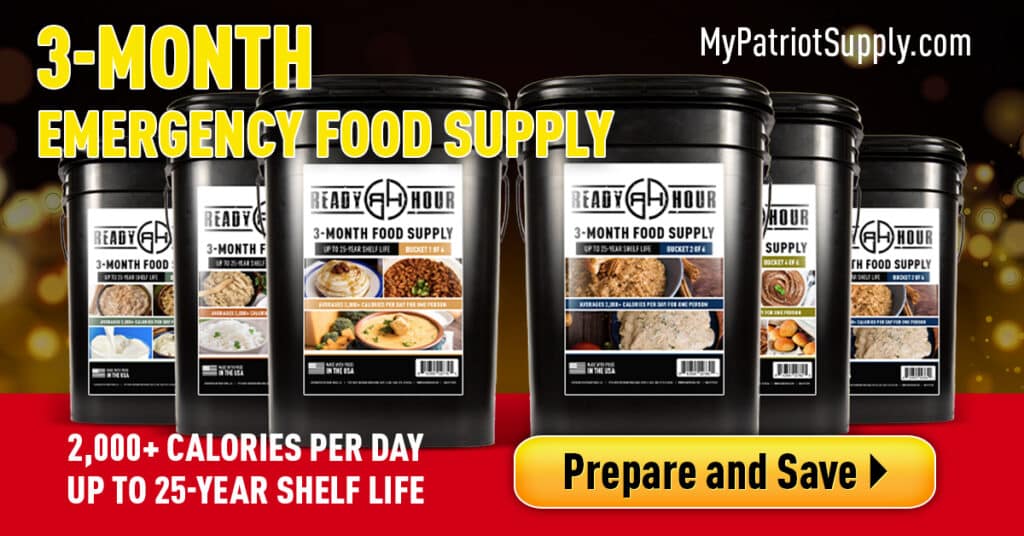In today's unpredictable world, being prepared for emergencies and disasters is crucial. One of the most important aspects of disaster preparedness is having a reliable and nutritious 3-month emergency food supply at hand. In this article, we will explore some of the top choices in emergency food storage that will keep you sustained and healthy during any crisis situation.
A Guide to Choosing the Perfect Emergency Food Kit
With so many options available in the market, selecting the right food kit can be overwhelming. Here is a list of factors to consider when choosing a survival food supply:
- Durability and Shelf Life: Opt for freeze dried food or canned goods that last 25 years or more to ensure your investment doesn't go to waste.
- Nutritional Value: Make sure your chosen food supply contains a balanced mix of carbohydrates, proteins, and fats to provide proper nourishment.
- Servings and Calories: Aim for at least 2,000 calories a day for survival, which translates to approximately 180,000 calories for a 3-month supply.
- Variety: A diverse menu with various meal options prevents appetite fatigue, ensuring you maintain a healthy diet during an extended period of crisis.
- Storage Ease: Look for pouches and containers that are easy to store and transport, as well as resistant to pests and moisture.
Now that we have outlined the crucial factors to consider, let's dive into some popular emergency food supply choices on the market.
The Essentials: Grains, Legumes, and Dairy
Stocking up on staple foods like grains, legumes, and dairy products is an affordable and effective way to build a 3-month food supply. Here's a list of some popular choices:
- Wheat: Hard red or white wheat can be ground into flour for making bread and other baked goods.
- Rice: Brown or white rice provides essential carbohydrates for energy and sustenance.
- Flour: All-purpose or whole wheat flour is versatile and can be used in various recipes.
- Canned Meats: Non-perishable options like beef, chicken, and fish are excellent sources of protein.
Dried and Freeze Dried Meats
In addition to canned meats, stocking up on dried and freeze-dried meat options – such as jerky or freeze-dried beef crumbles – is another excellent way to ensure you have enough protein in your emergency food supply.
Popular Pre-Packaged Food Options
Pre-packaged emergency food kits offer convenience and variety, with pre-cooked meals that are easy to prepare. Some popular meal options include:
- Mac & Cheese: A comforting and calorie-rich option that requires only boiling water to prepare.
- Creamy Chicken Rice: A simple yet satisfying dish packed with flavor and essential nutrients.
- Homestyle Potato Soup: A hearty and delicious soup perfect for cold weather or when fresh produce is scarce.
These ready-to-eat meals usually come in pouches or cans and can last up to 25 years if properly stored. They also typically provide around 2,000 calories per day, ensuring adequate nutrition for survival.
Customizing Your 3-Month Emergency Food Supply List
To further tailor your food storage, consider incorporating additional items like snacks and drinks:
- Poptarts and oatmeal packets make excellent breakfast choices with a long shelf life.
- Coffee, tea, and hot chocolate can provide comfort and a much-needed energy boost during challenging times.
- Protein bars and trail mix are perfect high-calorie snacks to keep you energized between meals.
Finally, don't forget to account for any dietary restrictions or allergies when building your emergency food supply.
A Word on Disaster Supplies Kits
In addition to food, having essential non-food items in your disaster supplies kit is crucial. Make sure to include items like water purification tablets, a portable stove, fuel, cooking utensils, a manual can opener, and extra clothing to ensure a safe and comfortable experience during an emergency situation.
Planning for Special Conditions: Short-Term Calorie Requirements
Beyond the standard 3-month emergency food supply, it's wise to plan for shorter-term needs as well. For example:
- Ensure a 3-day supply of food with at least 7,500 calories per person for surviving extreme conditions such as natural disasters.
- Plan for a one-week supply of food with approximately 17,500 calories per person to weather less severe emergency situations.
This strategy will enable you to adapt more easily to varying crisis scenarios and durations without compromising your health and safety.
By considering the factors outlined above and selecting from the wide variety of available emergency food supply options, you can confidently build a 3-month food storage plan tailored to your unique needs and preferences. With proper planning and investment, you will have peace of mind knowing that you are prepared for any emergency or disaster situation.


